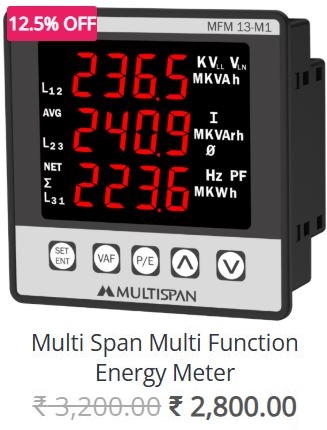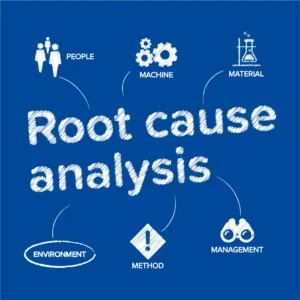In today’s fast-paced manufacturing world, where production efficiency, cost reduction, and equipment longevity are paramount, businesses are increasingly turning to strategies that optimize the operations of machinery and systems. One such strategy that has gained significant traction is Autonomous Maintenance (AM), an approach that empowers operators to take an active role in maintaining their equipment. By shifting the responsibility of maintenance to the operators who work closely with the machines every day, businesses can realize enhanced equipment life, increased operational efficiency, and a culture of continuous improvement.
What is Autonomous Maintenance?
Autonomous Maintenance (AM) is a proactive maintenance approach where operators, instead of maintenance technicians, take on routine maintenance tasks like cleaning, inspecting, lubricating, and tightening equipment parts. This model is a key element of Total Productive Maintenance (TPM), a methodology that seeks to maximize equipment uptime and minimize waste.
The goal of AM is to make operators more knowledgeable about the equipment they operate, so they can identify and address potential issues before they lead to equipment breakdowns or major failures. It’s about giving operators the tools, skills, and responsibility to maintain the equipment they use daily, allowing them to detect, diagnose, and address minor issues in real time.
The Key Benefits of Autonomous Maintenance
1. Empowered Operators
One of the most transformative aspects of Autonomous Maintenance is that it shifts the responsibility of machine upkeep from solely maintenance technicians to the operators themselves. Operators become more engaged in the upkeep of their machines, and this empowerment fosters a deeper understanding of the equipment. They can identify problems earlier, often before they escalate into larger issues.
This shift also improves operator morale because they can see the direct impact of their efforts on the production process. Empowering operators in this way not only increases their skillset but also nurtures a sense of ownership and responsibility over the machinery they operate.
2. Improved Equipment Life
The root cause of most machine breakdowns can often be traced back to issues that operators could have prevented if they had recognized the signs early on. Autonomous Maintenance enables operators to take the necessary steps to avoid excessive wear and tear, preventing breakdowns and minimizing downtime.
When operators regularly clean, lubricate, and inspect equipment, they not only ensure optimal performance but also extend the lifespan of machinery. Timely identification and correction of minor problems, such as loose bolts or dirty components, can prevent them from turning into costly and time-consuming repairs. This preventive approach ultimately enhances the longevity of the equipment, saving money on replacement costs.
3. Reduced Downtime
Regular, proactive maintenance is key to reducing unplanned downtime, which is one of the most costly issues for manufacturers. AM reduces the need for emergency maintenance by addressing small issues before they turn into major breakdowns. Operators can act as the first line of defense, identifying potential problems early and fixing them before they result in significant downtime.
Moreover, with operators performing routine maintenance tasks, maintenance teams can focus on more complex repairs or upgrades, ensuring that the plant’s operations remain efficient without unnecessary interruptions.
4. Cost Savings
The transition to Autonomous Maintenance can yield substantial cost savings in several ways. First, by reducing downtime and improving equipment longevity, organizations save on the high costs associated with emergency repairs and equipment replacements. Second, since operators are taking on routine maintenance tasks, there is a reduced dependency on expensive external technicians for basic upkeep, which further cuts operational costs.
Additionally, AM can help companies reduce material waste by catching early signs of malfunction, preventing components from being damaged beyond repair. As a result, companies can improve both their financial bottom line and their environmental footprint.
5. Promotes a Culture of Continuous Improvement
When operators are given the responsibility for their machines’ upkeep, it fosters a culture of continuous improvement within the organization. Autonomous Maintenance encourages employees to stay vigilant and develop a mindset of prevention rather than reaction. This shift in mindset drives a cycle of constant learning, problem-solving, and optimization.
Through the process of ongoing observation, analysis, and feedback, operators and maintenance teams continuously improve the maintenance process. These incremental improvements can lead to more significant gains in equipment performance, process efficiency, and overall operational success.
Steps to Implement Autonomous Maintenance
To implement Autonomous Maintenance effectively, organizations should take a structured approach. Here’s a step-by-step guide:
-
Training and Education: Operators need to be trained not only on the fundamentals of the equipment but also on the importance of preventive maintenance. By understanding the criticality of each machine’s role in the production process, operators will be more likely to embrace their responsibilities.
-
Define Maintenance Tasks: Establish clear maintenance tasks that operators can perform daily, weekly, or monthly. These tasks could include inspections, cleaning, lubricating, checking for leaks, and tightening parts.
-
Provide the Right Tools and Resources: Equip operators with the necessary tools, equipment, and manuals to perform their tasks effectively. This includes providing checklists or digital systems for operators to document their maintenance activities.
-
Create a Support System: While operators will be empowered to perform most tasks, a support system involving maintenance teams is crucial for more complex issues. Maintenance teams can act as mentors, providing guidance and support when necessary.
-
Monitor and Measure Success: Regularly track the success of AM initiatives through KPIs such as equipment uptime, the number of unplanned downtime incidents, and the frequency of repairs. This data will help you refine the process and identify areas for improvement.
Conclusion
Autonomous Maintenance is a game-changing approach for organizations looking to optimize the efficiency and lifespan of their equipment. By empowering operators to take a more active role in maintenance, businesses not only reduce downtime and repair costs but also foster a culture of continuous improvement and accountability. The benefits are clear: increased equipment life, better utilization of resources, and, ultimately, a more efficient and cost-effective production process.
As manufacturing plants continue to evolve, Autonomous Maintenance will play a pivotal role in shaping the future of industrial operations. With operators at the helm of equipment maintenance, companies can ensure a smoother, more reliable, and longer-lasting production environment.















